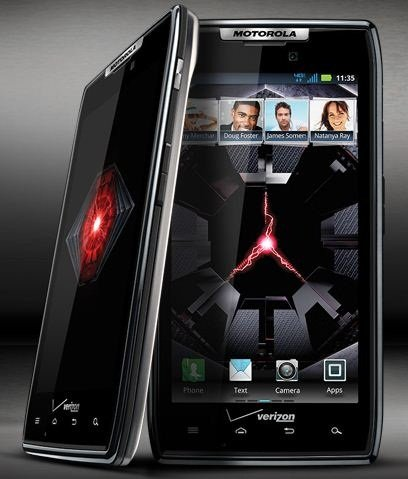The thinnest smartphones are capturing a significant portion of consumer attention as manufacturers race to design sleek, lightweight devices. With the smartphone market evolving rapidly, 2012 has seen fierce competition where slim smartphone designs are not just aesthetically appealing but also a testament to advanced engineering. Leading the charge, brands like Motorola, Huawei, and Fujitsu are unveiling the thinnest mobile devices, each vying for the coveted title of the slimmest smartphone. The trend began with the notable Motorola Droid RAZR, which set the stage for what consumers can now expect from modern sleek Android phones. As we witness these innovations unfold, it’s clear that the quest for ultra-thin smartphones is only just beginning, pushing the boundaries of what we once thought possible.
In recent years, consumer electronics have shifted towards more compact forms, especially in the world of mobile technology. This movement emphasizes the emergence of ultra-slim devices that promise not only portability but also cutting-edge features. As we delve into the latest offerings, the race among manufacturers to produce the sleekest devices continues, highlighting innovative designs and capabilities. With Android smartphones leading the charge, top contenders such as the latest models from Huawei and Fujitsu showcase exceptional engineering in their pursuit of a thinner profile. The evolution of these devices reflects a broader trend in the tech industry, focused on merging style with functionality in an increasingly competitive landscape.
The Rise of the Thinnest Smartphones in 2012
The smartphone market in 2012 saw fierce competition as manufacturers strived to release the thinnest smartphones possible. Among the leaders in this quartile is the Motorola Droid RAZR, launched in late 2011, which set a precedent with its exceptionally thin design and became a benchmark for other brands. Following suit, Huawei introduced the Ascend P1 S, and Fujitsu unveiled the Arrows F07D, both of which claimed the title of the thinnest mobile devices at the International Consumer Electronics Show (CES) 2012. These propositions not only highlight technological advancements but also reflect consumer desire for more compact, sleek Android phones that enhance portability without compromising on functionality.
As consumers begin to prioritize design alongside performance, the trend towards slim smartphone designs continues to shape the market landscape. The allure of the thinnest smartphones isn’t solely based on aesthetics; it also encompasses the integration of advanced technology within a compact form factor. Users are not just looking for the slimmest devices, but also those that offer high-end features, improved battery life, and powerful cameras—all packaged in an elegant design. Therefore, the competition among 2012 smartphone models is not just about thickness; it also revolves around providing exceptional user experiences.
Frequently Asked Questions
What are the thinnest smartphones currently available on the market?
As of 2023, some of the thinnest smartphones include the Motorola Droid RAZR, Huawei Ascend P1 S, and Fujitsu Arrows F07D, which all feature sleek designs and impressive specifications. These slim smartphone designs are highly sought after for their portability and aesthetics.
Why are thinnest mobile devices popular among consumers?
Thinnest mobile devices are favored by many consumers due to their lightweight and sleek profiles, which enhance portability and style. Users often appreciate the modern aesthetic of slim smartphone designs, making them ideal for on-the-go lifestyles.
How does the 2012 smartphone competition influence the design of today’s thinnest smartphones?
The 2012 smartphone competition, featuring models like the Motorola Droid RAZR and Huawei Ascend P1 S, set a benchmark for slim smartphone designs. This drive for thinner profiles has continued to influence smartphone manufacturers today, leading to increasingly sleek Android phones with improved technologies.
What materials are used in creating the thinnest smartphones?
Manufacturers of thinnest smartphones often use materials such as aluminum and glass to reduce weight and thickness while maintaining durability. These high-quality materials not only contribute to slim smartphone designs but also enhance the overall user experience.
Do thinnest smartphones compromise on performance?
While thinnest smartphones prioritize a sleek profile, manufacturers are increasingly focusing on performance. Modern slim devices often incorporate powerful processors and advanced technology, ensuring that these sleek Android phones do not compromise on speed or functionality.
What are the benefits of using a slim smartphone design?
The benefits of using a slim smartphone design include increased portability, ease of handling, and a fashionable look. Thinnest mobile devices often fit comfortably in pockets or small bags, making them convenient for everyday use.
Are there any challenges with the thinnest mobile devices?
Yes, while thinnest mobile devices are aesthetically pleasing, they may face challenges such as battery life due to limited space for larger batteries. Manufacturers are addressing this issue with advanced battery technology to optimize performance without sacrificing thickness.
How do the thinnest smartphones compare in terms of durability?
Many of the thinnest smartphones are designed with durable materials to withstand everyday wear and tear. However, their slim profiles can sometimes make them more susceptible to damage from drops. It’s advisable to use cases designed for slim smartphone designs to enhance protection.
What innovations have led to the creation of the thinnest smartphones?
Innovations such as advanced materials, cutting-edge battery technology, and efficient circuit designs have led to the production of thinnest smartphones. Continuous research in engineering and design has allowed for the creation of increasingly compact devices without sacrificing quality.
Can I expect good camera performance from thinnest smartphones?
Yes, many of the thinnest smartphones come equipped with high-quality cameras that rival those of thicker models. Continued advancements in camera technology and sensor miniaturization allow for impressive performance in slim smartphone designs.
| Smartphone Model | Thickness | Claim to Fame |
|---|---|---|
| Motorola Droid RAZR | 7.1 mm | First major thin smartphone, launched late 2011. |
| Huawei Ascend P1 S | 6.68 mm | Competing claim to the title of thinnest smartphone at CES 2012. |
| Fujitsu Arrows F07D | 6.7 mm | Also competing for the title of the thinnest smartphone at CES 2012. |
Summary
The thinnest smartphones in 2012 highlight the fierce competition in the mobile industry as manufacturers strive to create the sleekest devices. The Motorola Droid RAZR set the stage with its impressive design, followed closely by Huawei and Fujitsu, each claiming to outdo the other. This trend not only emphasizes technological innovation but also the changing consumer preferences towards more portable and stylish devices. As smartphones continue to evolve, the pursuit of the thinnest design remains a key focus for manufacturers aiming to attract attention in a crowded market.



